Writer Ferenc Molnár was born as Ferenc Neumann in Józsefváros. He was eleven years old when, in 1889, he moved into the first-floor apartment of their own residential building at 83 József Boulevard, built by his father. Mór Neumann commissioned Alfréd Wellisch (1854–1941) to design the three-story Neo-Renaissance building. During his long and successful career, the architect created around two hundred residential buildings in the capital, but people can thank him for the former high school in Tavaszmező Street (now part of Óbuda University), the headquarters of Salgótarján Coal Mines PLC at 25 Arany János Street, or the headquarters of the Jewish Congregation in Síp Street.
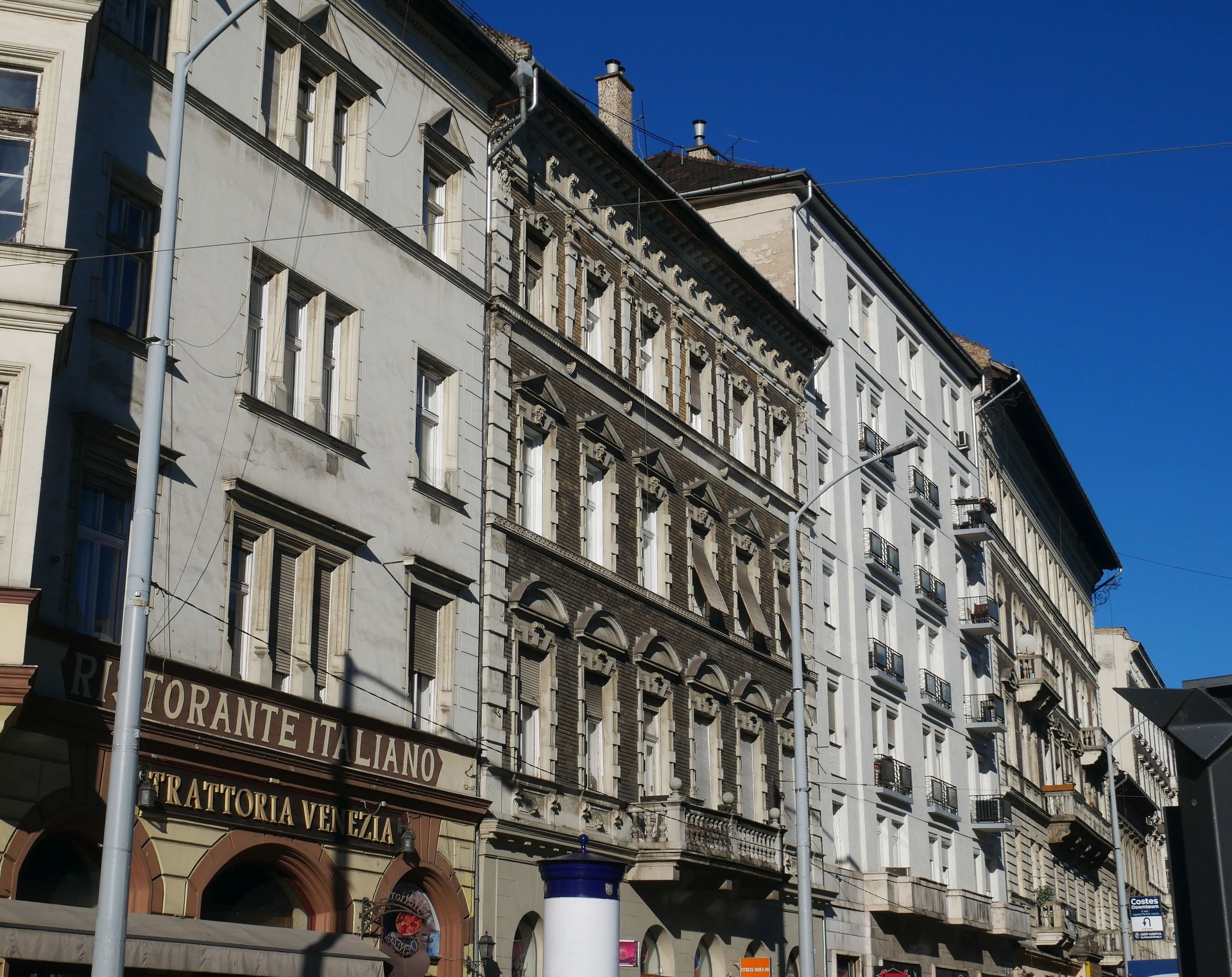
The house at 83 József Boulevard, where Ferenc Molnár lived (Photo: Tímea Simon)
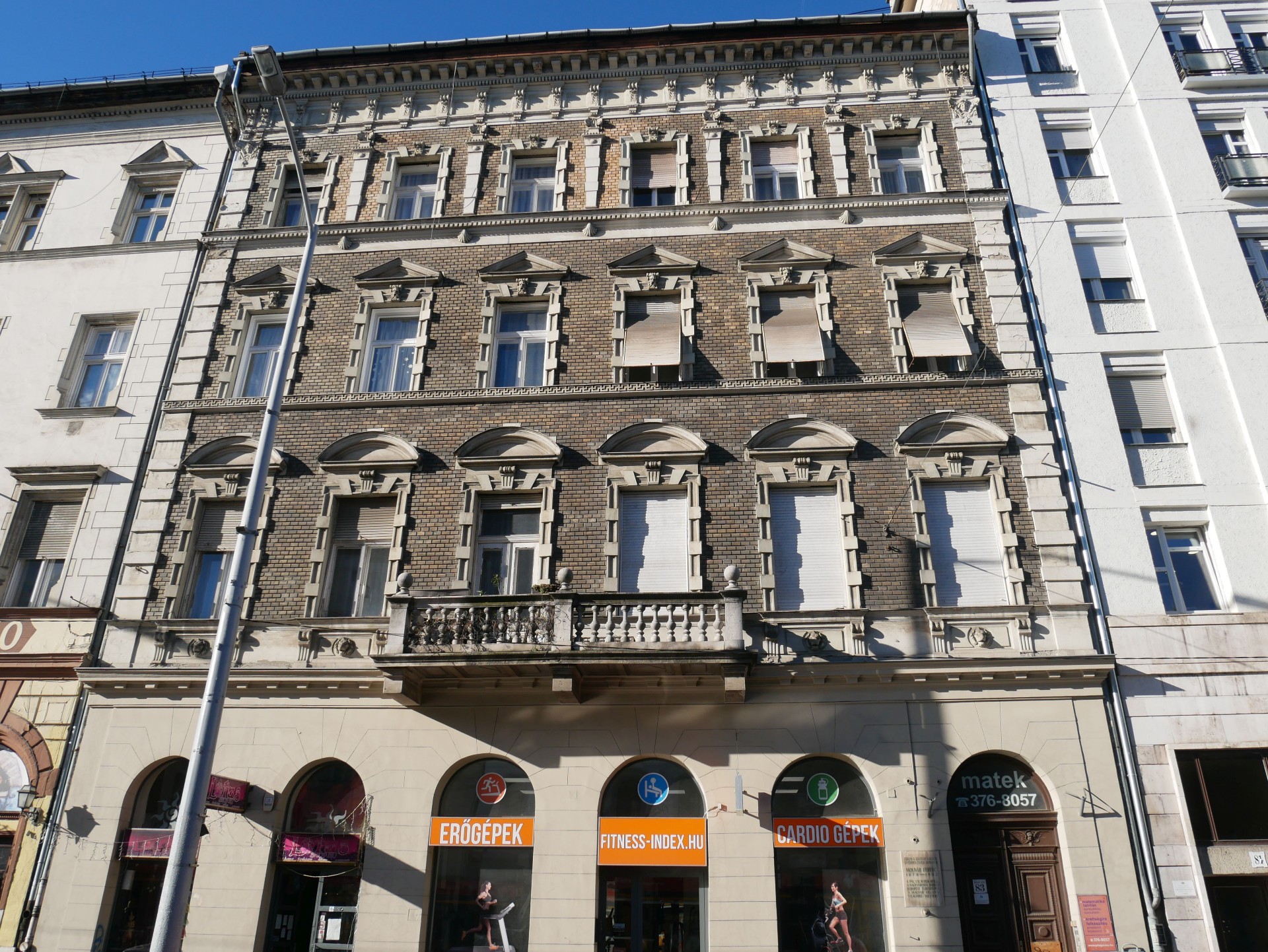
The three-story residential building was built by the writer's father, Mór Neumann, a doctor (Photo: Tímea Simon)

The Neumann House at 83 József Boulevard was designed by Alfréd Wellisch (Photo: Tímea Simon)
The client was a well-known doctor throughout the city, who, as one of the founders of the General Workers' Patient Care and Disability Fund [Általános Munkás Betegsegélyező és Rokkant Pénztár], did a lot to improve public health conditions in Budapest. Neumann, who graduated as a surgeon at the University of Vienna, took care of the members of the organisation in Józsefváros and Ferencváros from 1872, treated the workers of the Workers' Association working in larger factories, and was the factory doctor of the Ganz Factory for 25 years.
During the construction of the Margit Bridge, between 1872 and 1875, he was also responsible for the health of the construction workers. When cholera struck the capital, he could often be seen driving from one patient's house to another in his horse-drawn carriage. He worked a lot, and thanks to his work, he was able to build his own house on the boulevard at the age of 41, as a father of two.
Before 1889, the family lived in Józsefváros (50 József Boulevard, 16 Rigó Street) and Ferencváros (31 Kinizsi Street), but in these places, Mór Neumann was not the owner, but a tenant. When he moved into his own house, his son Ferenc - who took the name Molnár in 1895 - was a student at the reformed high school. He was interested in almost everything, from botany to painting to literature. He bred silkworms, drew cartoons, edited his own newspaper (of course he wrote all the articles), but also had a mineral collection, a plant collection, a stamp collection, and he also organised home plays, in which his younger sister, Erzsébet, who was two years younger, often appeared. These activities required a lot of space, which was provided by the new house and new apartment.
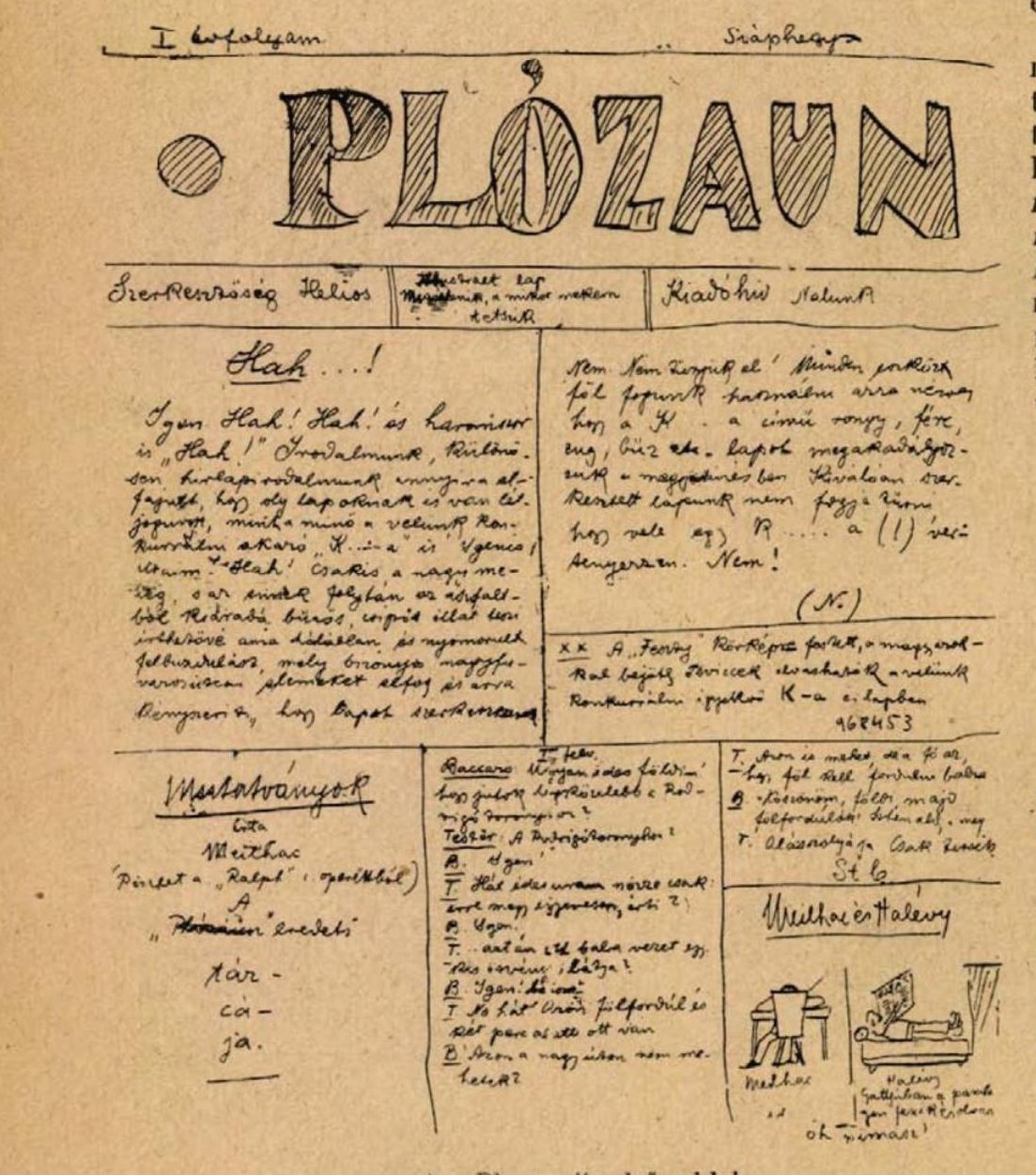
The front page of the comic strip Plózaun, written, drawn and reproduced by 8th grader Ferenc Neumann (Source: Színházi Élet, Issue 17, 1927)
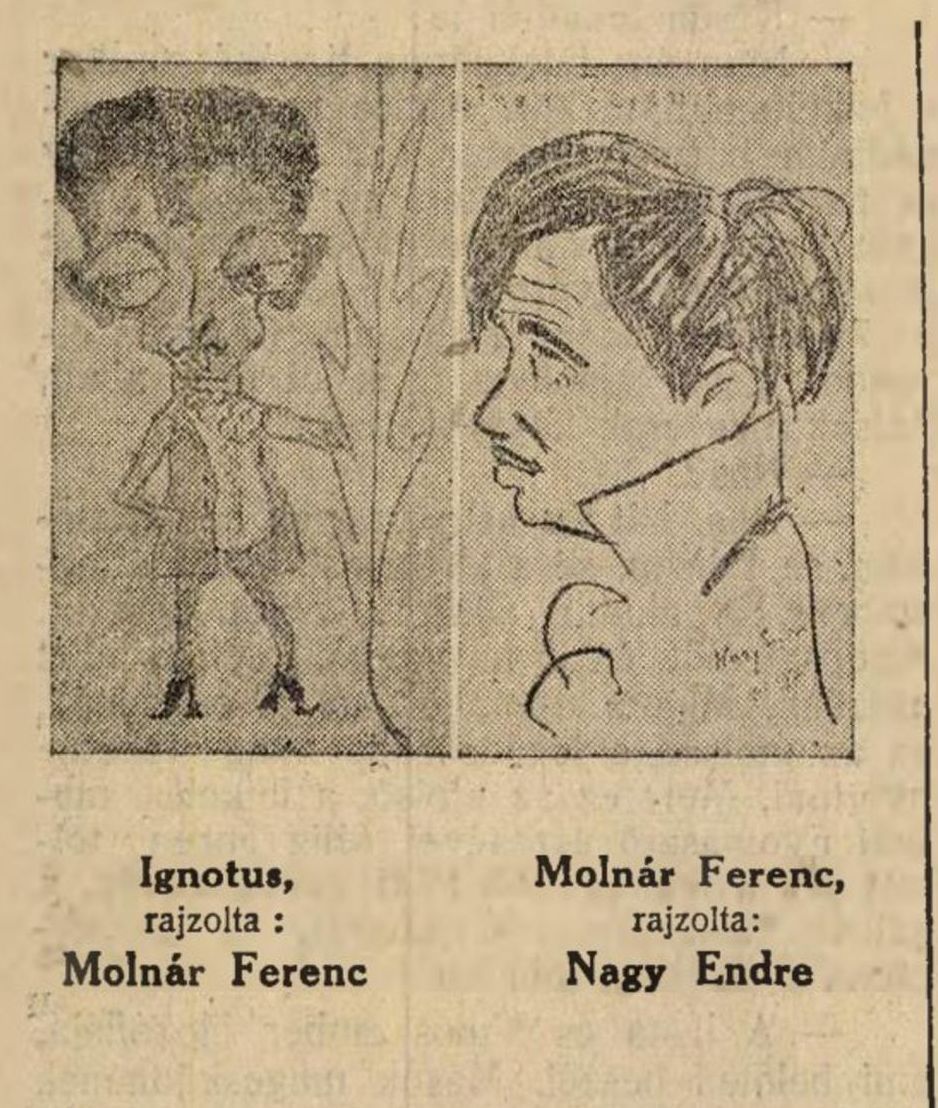
Ferenc Molnár's caricature of Ignotus and Endre Nagy's drawing of Ferenc Molnár (Source: Világ, Issue 2, 1914)
The three-story Neo-Renaissance style building reflected its owner's puritan outlook on life. The main facade is not ostentatious in the least, but the brickwork, the closing of the windows on the second floor decorated with human heads and the graceful design of the roof cornice reflect the skill of the designer. The inner courtyard of the house with a circular corridor proves the same restraint and precision.
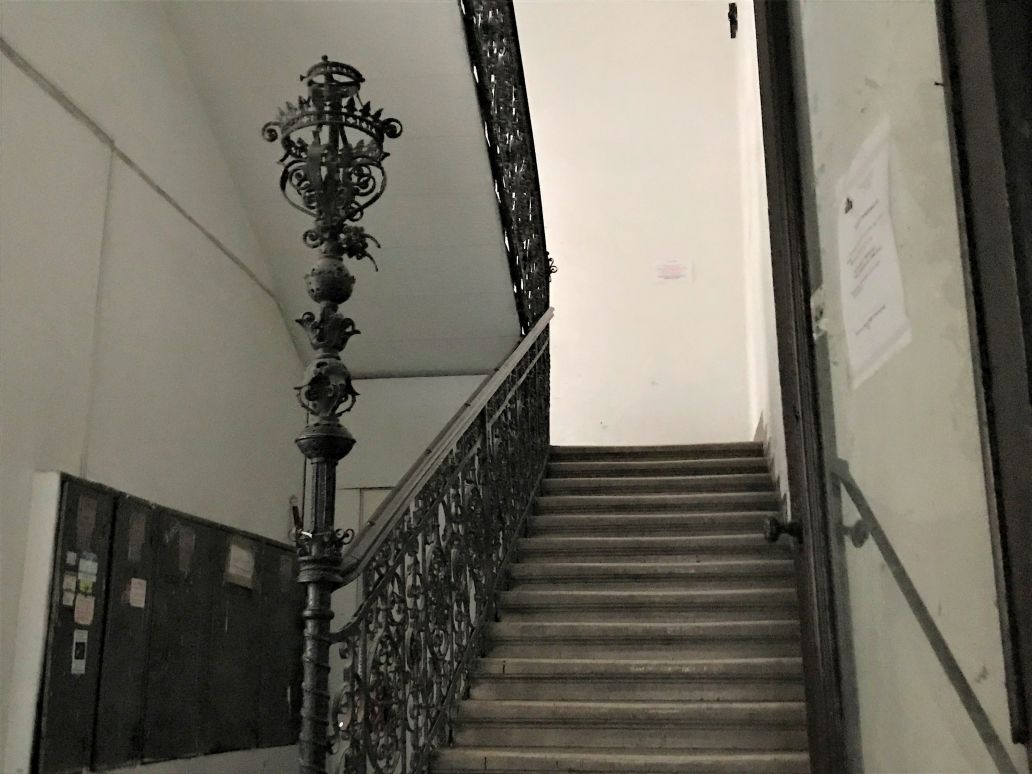
The staircase at 83 József Boulevard (Photo: Tímea Simon)
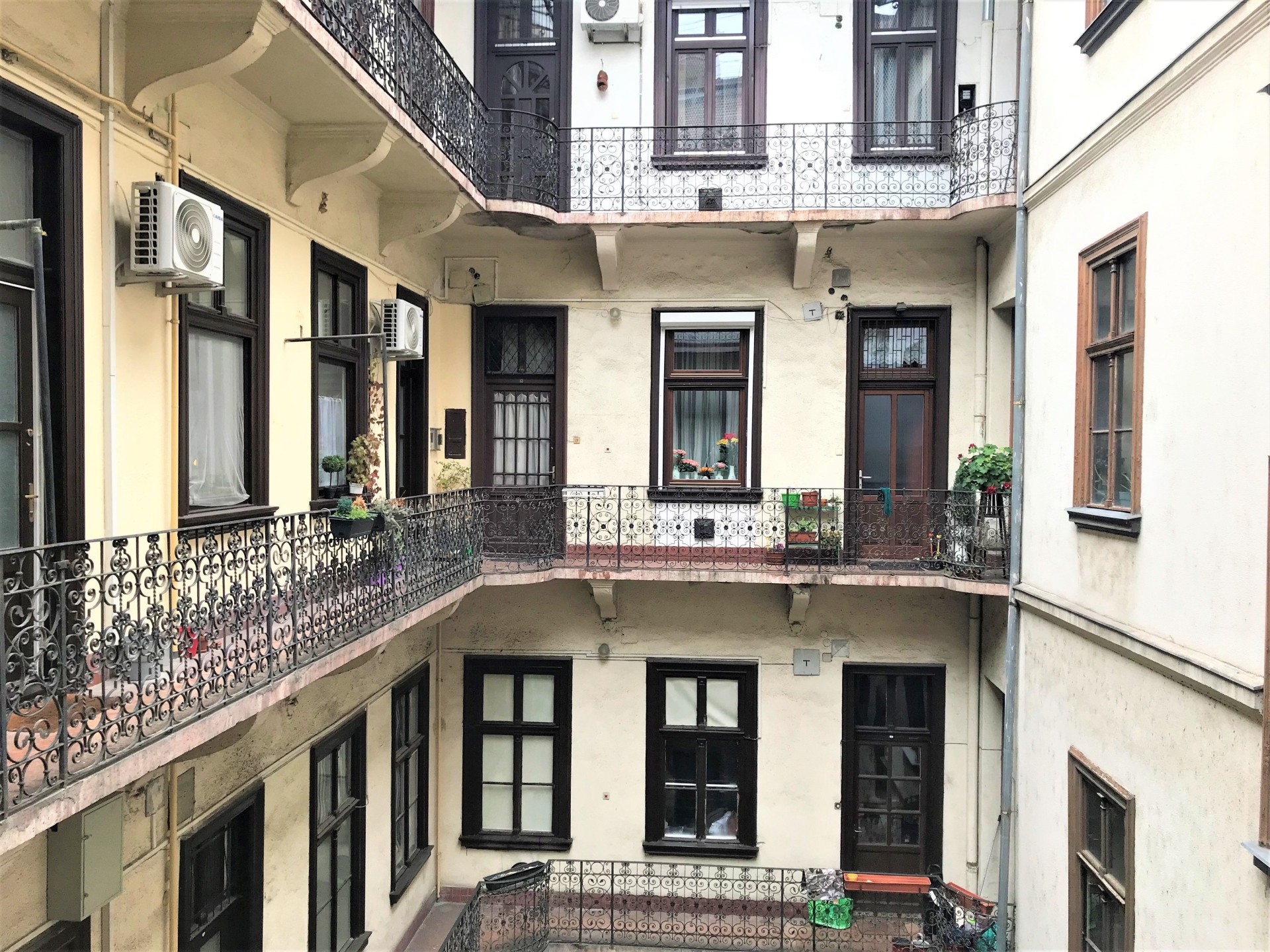
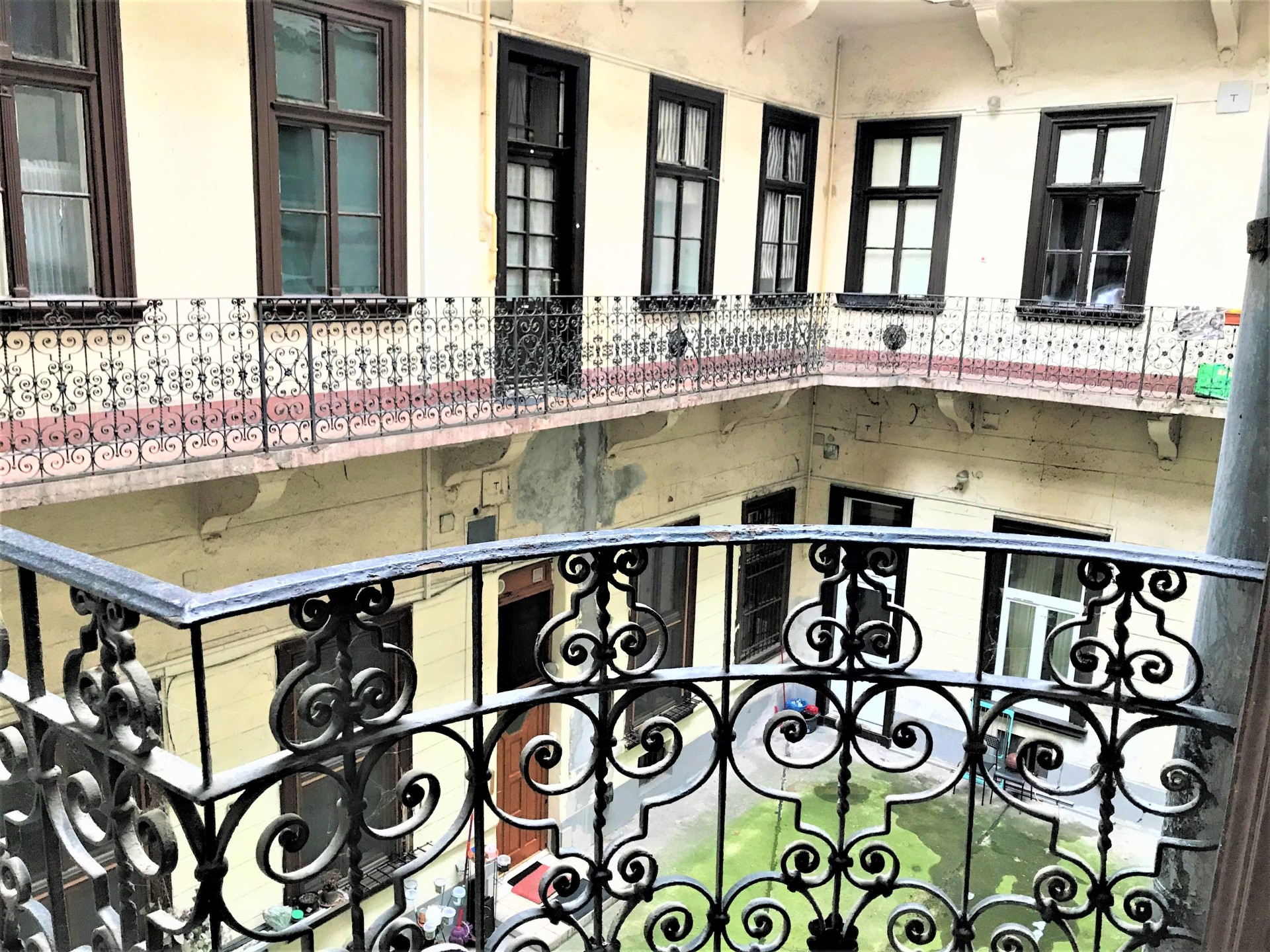
The inner courtyard of the building with a circular corridor (Photo: Tímea Simon)
The family's apartment was behind the first-floor windows overlooking the Outer Ring Road and the building's only ornate balcony. From the balcony, there was a good view of József and Ferenc Boulevards, as well as the huge barracks at the intersection of Üllői Road and the Gschwindt yeast and spirit factory opposite it (the barracks building is still there, the Corvin Cinema and the houses surrounding it).
In addition to the five living rooms, a bathroom, kitchen, dining room, and hall served the family's comfort. One of the rooms served as a doctor's office, where Mór Neumann received his patients during the day. In another room, the writer's mother, Jozefa Wallfisch (1853–1898), created a large library, in which she primarily collected and expanded the works of Hungarian literary figures. In one of his memoirs, the already world-famous Ferenc Molnár confessed that his mother's love of literature instilled in him an interest in writing.

The entrance to the apartment on the first floor, where Ferenc Molnár lived (Photo: Tímea Simon)
The apartment could have been a real family nest, where everyone felt at home. The writer's sister, Erzsébet Molnár (1881–1972), whom the others called Böske, never moved during her long life, and although she married several times, she preferred to live her everyday life within the well-known walls. And his brother, although a successful newspaper and playwright, he could afford to rent a separate apartment in the city from 1899, sooner or later he always returned to the family home.
His father also furnished one of the apartments on the third floor so that his son could live his independent life in calm conditions.
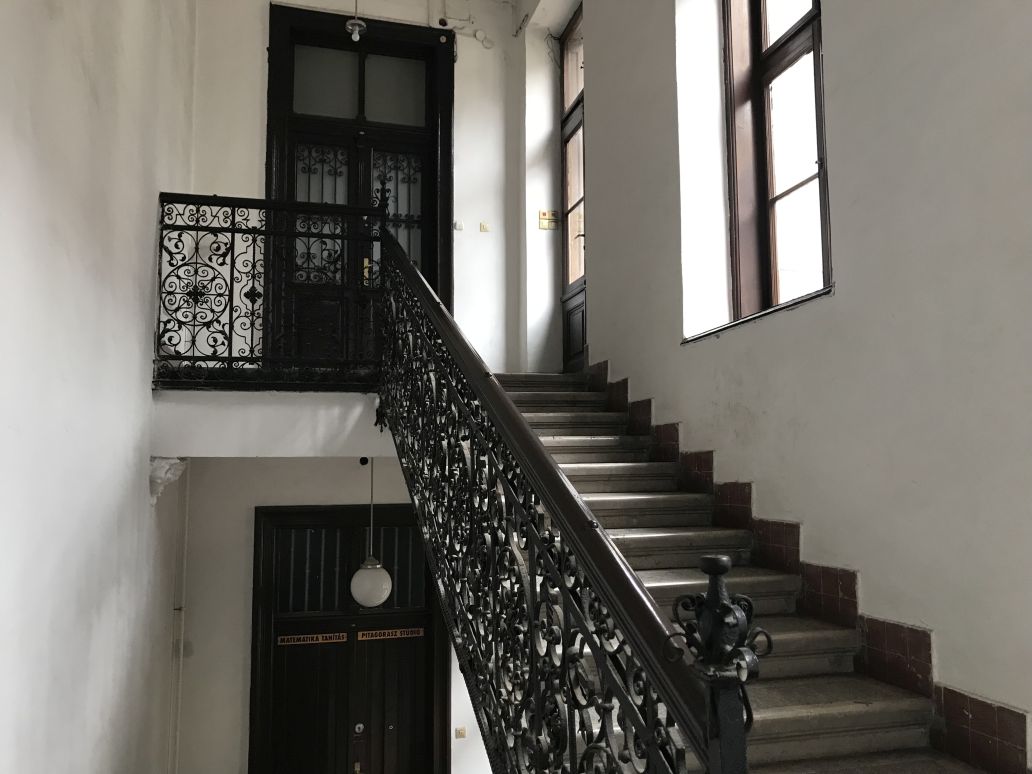
Entrance to the apartment on the third floor (Photo: Tímea Simon)
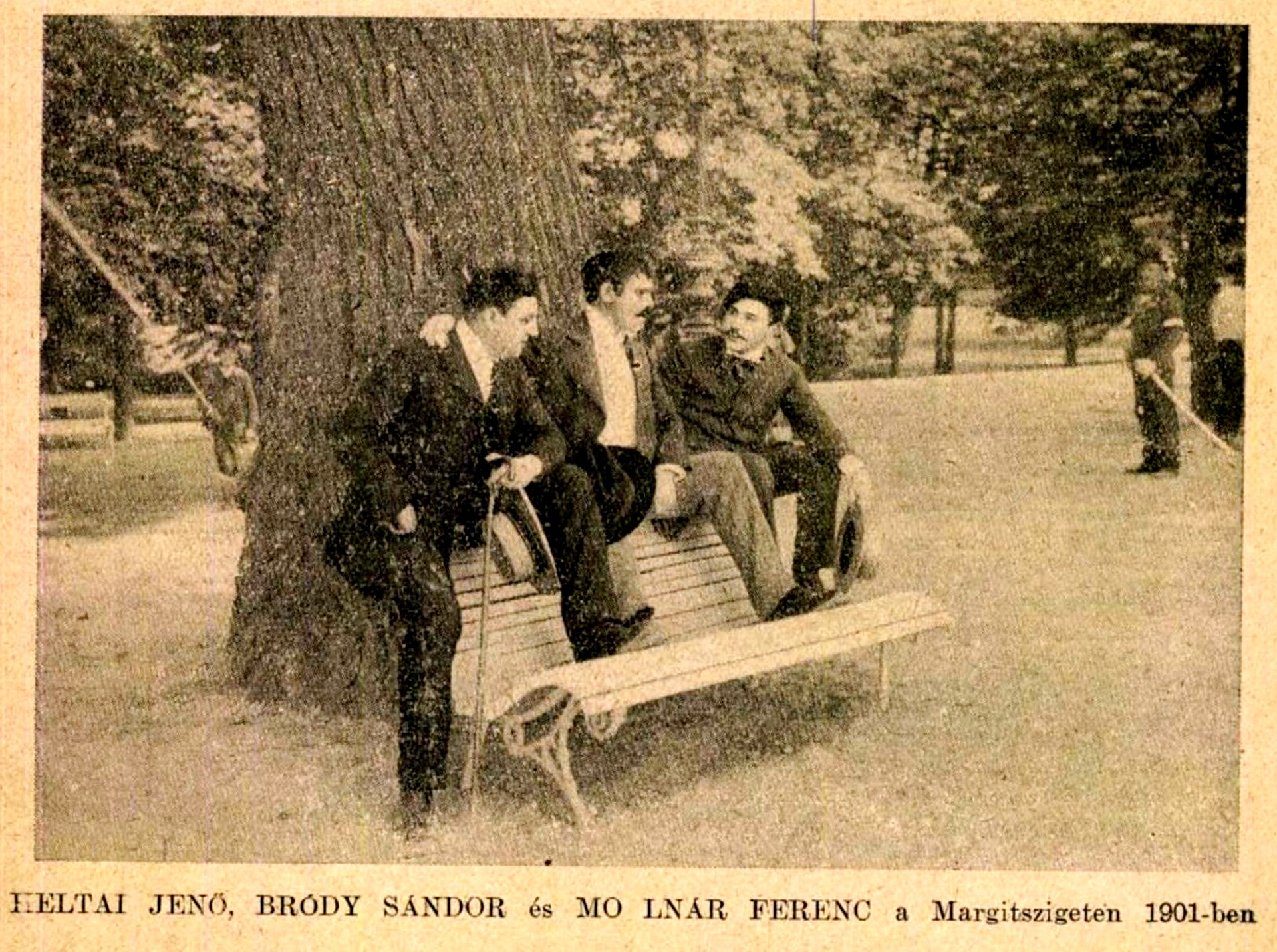
Ferenc Molnár with his teammates in a photograph taken in 1901 (Source: Színházi Élet, Issue 52, 1917)
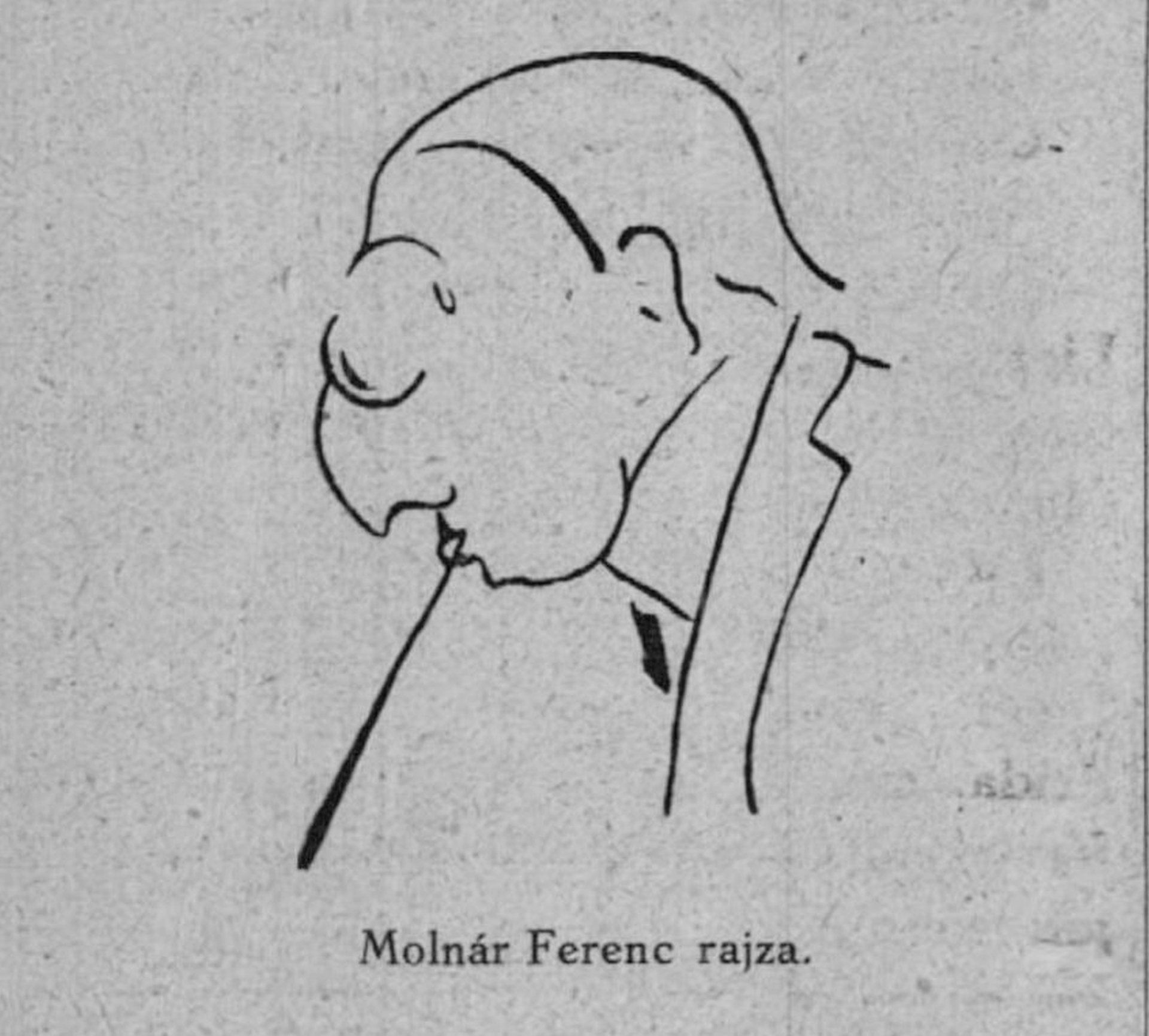
Ferenc Molnár's caricature of Jenő Heltai (Source: Színházi Hét, Issue 17, 1912)
Mór Neumann died in 1907 at the age of 54, and Ferenc Molnár went on to world fame, leaving his parents' house for good. Sometimes he spent a night at home, but due to his marriages and frequent invitations abroad, he only came to visit for a short time at 83 József Boulevard. However, the house and apartment were forever etched in his memory and occasionally appeared in a novel or drama as an interior.
"Finely furnished apartment in Pest. Signs of affluence are everywhere: a modern, black bookcase with oxidised silver fittings; large yellow English leather armchairs in the master bedroom. In the dining room, there is a Maple glass holder with a beautiful row of Moser glasses with tulip stems. The children's room is in Hungarian style. Rounded corners so that the child does not hit anything. Quiet twilight. The acrid smell of medicine in the air... It is slowly getting dark. Deep silence in the carpeted room. Only the soft movement of the tiny hand can be heard. Quieter and quieter. It will also slowly fall silent. Then suddenly doors slam, two servants run across the room, the doctor drops his top hat and the young lady runs trembling to the phone. The maid lights all the lights. The housekeeper turns curiously into the empty kitchen through the hastily left open door..." he wrote in his work The Cocoon [A gubó] in 1905.
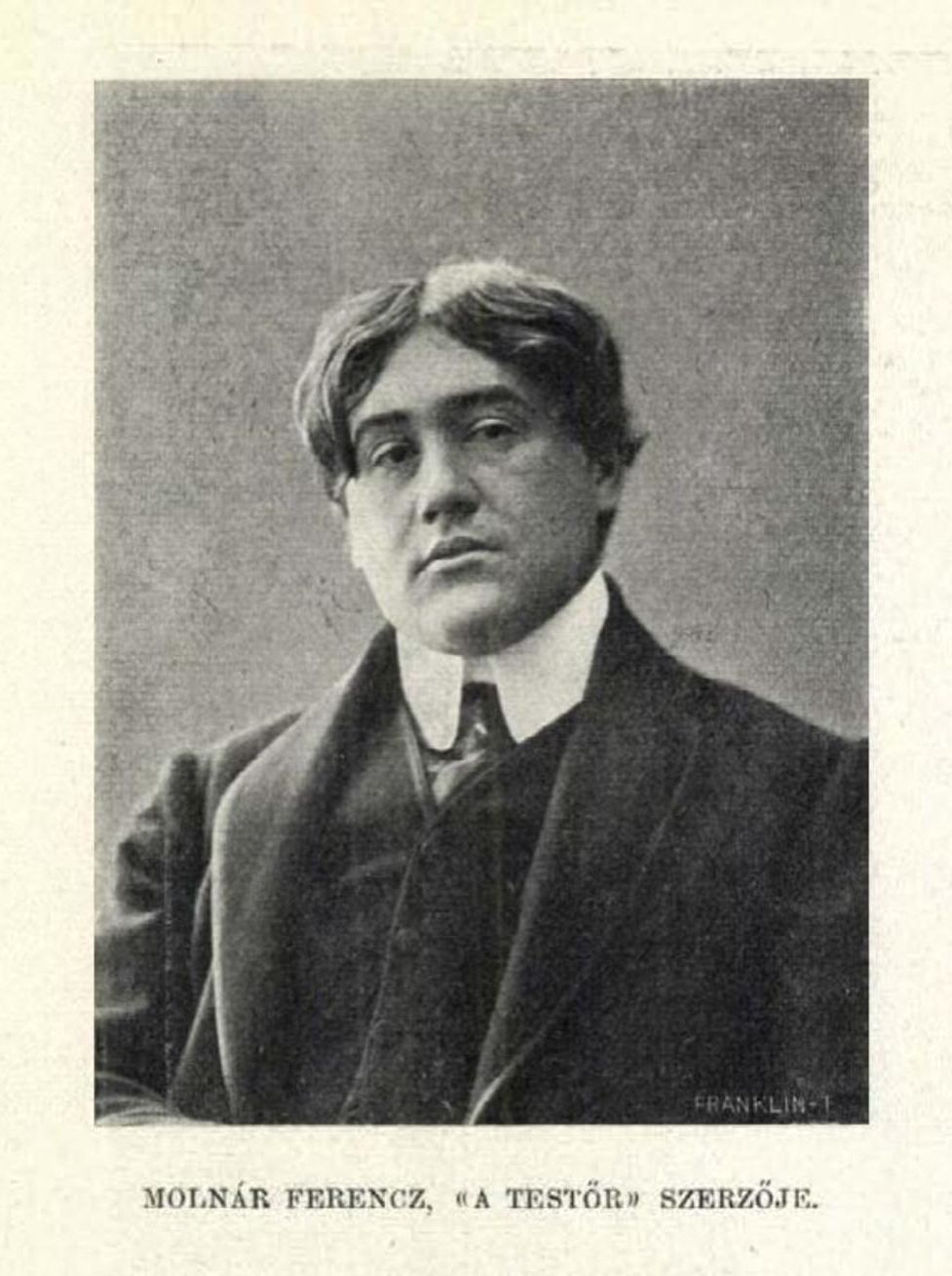
Ferenc Molnár as a successful playwright at the age of 28 (Source: Vasárnapi Ujság, 27 November 1910)
Today, a plaque on the facade of the house at 83 József Boulevard indicates that Ferenc Molnár, the author of The Paul Street Boys, the storyteller of Budapest growing into a metropolis, and the world-famous master of Hungarian comedy, lived here in his childhood and youth.

A memorial plaque in honour of Ferenc Molnár was unveiled on the wall of the house in 1958 (Photo: Tímea Simon)
Cover photo: The former Neumann House at 83 József Boulevard (Photo: Tímea Simon)

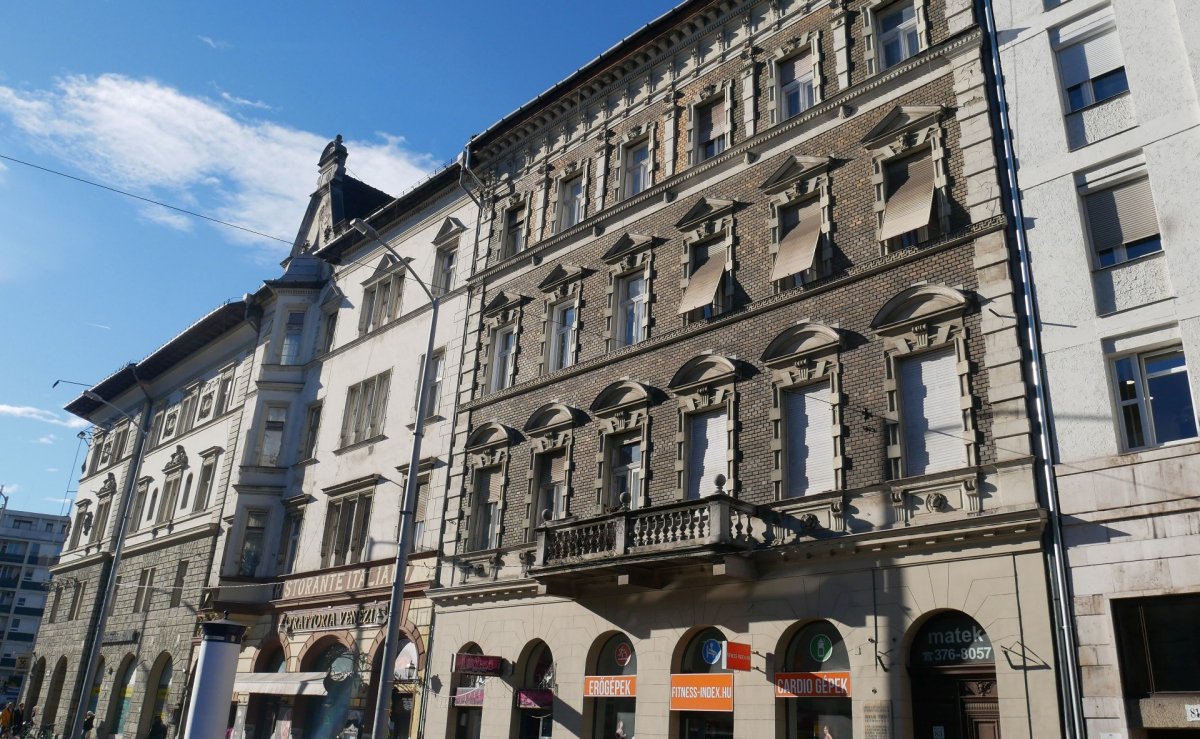
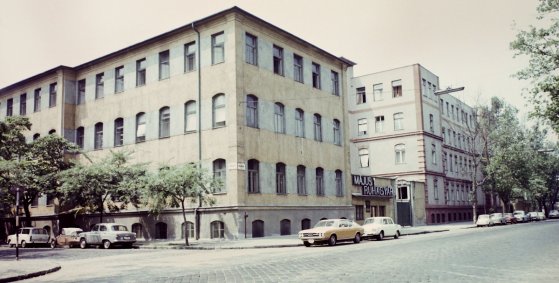

































Hozzászólások
Log in or register to comment!
Login Registration